An advantage of plt.pcolormesh over plt.imshow is the possibility to have unequal axis spacing.
On the other hand, plt.imshow's advantage over plt.pcolormesh is that it can display RGB-triplets.
Now, the predicament I am in is that I need to plot RGB-triplets with uneven axis spacing....
Below is a MWE:
import numpy as np
import matplotlib.pyplot as plt
from colorsys import hsv_to_rgb
square_x_axis = np.linspace(0,1,100)**2
cube_y_axis = np.linspace(0,1,200)**3
X,Y = np.meshgrid(cube_y_axis,square_x_axis); print(f'meshgrid has shape: {X.shape}')
rgb_array = np.zeros((square_x_axis.size, cube_y_axis.size,3)); print(f'rgb_array has shape: {rgb_array.shape}')
""" Now we populate the rgb array (initially in hsv color space for clarity)"""
for i,row in enumerate(rgb_array):
for j,col in enumerate(row):
rgb_array[i,j,:] = np.array(hsv_to_rgb(0,square_x_axis[i],cube_y_axis[j]))
fig = plt.figure(figsize=(15,10))
imshow_ax = plt.subplot(1,2,1)
imshow_ax.imshow(rgb_array, aspect='auto', extent=[0,1,0,1])
pcolor_R_ax = plt.subplot(3,2,2)
pcolor_R_ax.pcolormesh(X,Y,rgb_array[:,:,0], cmap='Reds')
pcolor_G_ax = plt.subplot(3,2,4)
pcolor_G_ax.pcolormesh(X,Y,rgb_array[:,:,1], cmap='Greens')
pcolor_B_ax = plt.subplot(3,2,6)
pcolor_B_ax.pcolormesh(X,Y,rgb_array[:,:,2], cmap='Blues')
Which produces the following figure:
The problem becomes immediately obvious: imshow (on the left) is capable of representing the 3D array, but its axis are scaled wrong, leading to a distorted representation. pcolormesh (on the right), on the other hand, can not represent the 3D array (hence why I plot all three channels separately), but is capable of applying the axis correctly, leading to no distortion.
How can I combine these properties?



